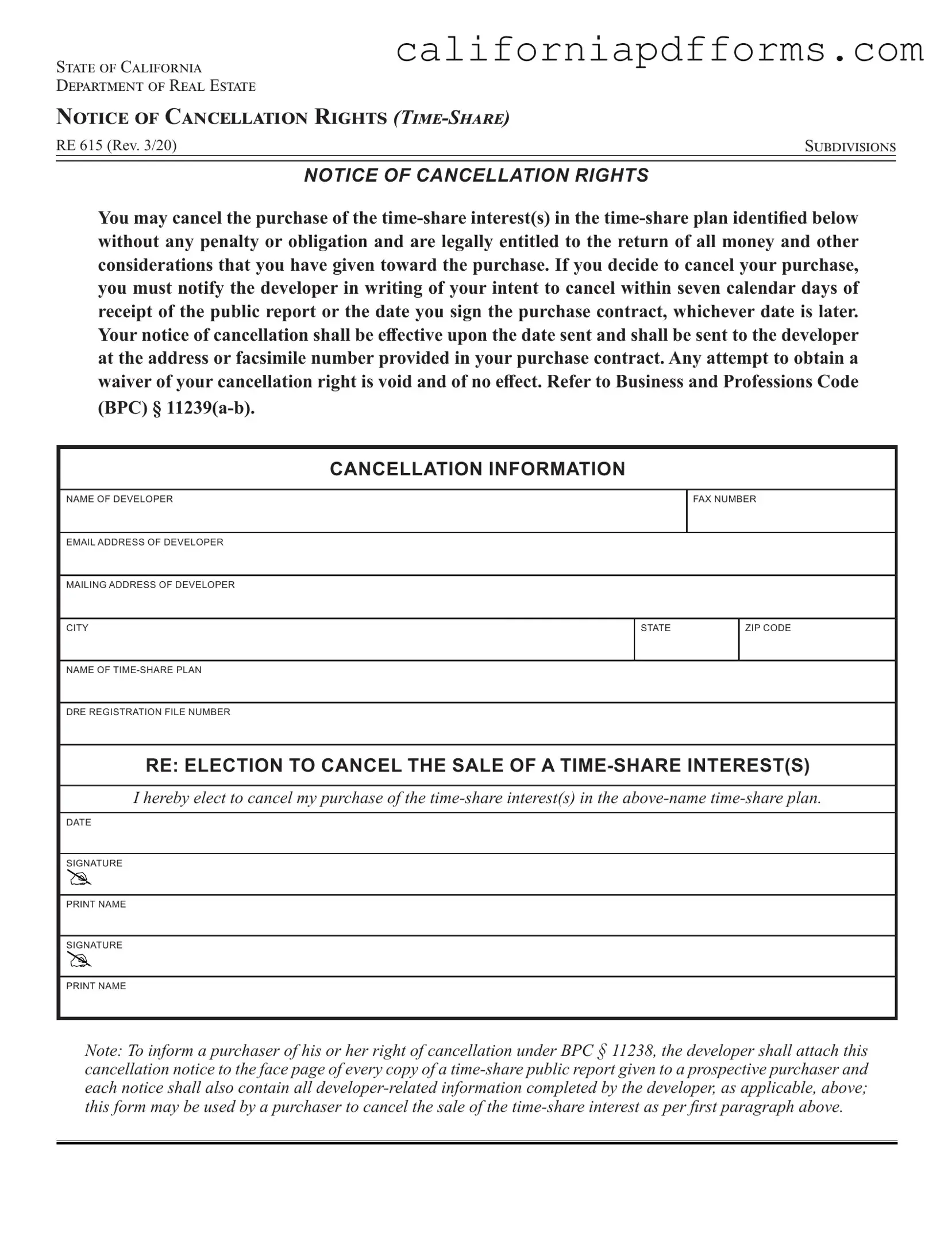The California RE 615 form is a Notice of Cancellation Rights specifically designed for time-share purchases. It informs buyers of their legal right to cancel their purchase within a specified timeframe without facing penalties. The form must be provided by the developer to prospective purchasers, ensuring they are aware of their cancellation rights under California law.
How long do I have to cancel my time-share purchase?
Buyers have seven calendar days to cancel their time-share purchase. This period begins from the later of two events: the date the buyer receives the public report or the date they sign the purchase contract. It is crucial to act within this timeframe to ensure the cancellation is valid.
What should I include in my cancellation notice?
Your cancellation notice should include the following information:
-
Your name and signature
-
The name of the time-share plan
-
The developer’s name and contact information
-
The date of your cancellation notice
Make sure to send the notice to the developer at the address or fax number provided in your purchase contract.
While there is no strict format required, it is recommended to use the RE 615 form to ensure all necessary information is included. This form is specifically tailored for notifying developers of a cancellation and helps streamline the process.
What happens after I send my cancellation notice?
Once you send your cancellation notice, it becomes effective on the date it is sent. The developer is then legally obligated to return all money and other considerations you provided toward the purchase of the time-share interest.
Can I waive my cancellation rights?
No, any attempt to waive your cancellation rights is void and has no legal effect. The law protects your right to cancel, and developers cannot require you to give up this right.
How do I send my cancellation notice?
You can send your cancellation notice via mail or fax to the developer's contact information provided in your purchase contract. Ensure that you keep a copy of the notice for your records and consider using a method that provides proof of delivery.
What if I miss the cancellation deadline?
If you miss the seven-day cancellation deadline, you will typically lose your right to cancel without penalties. However, it may be beneficial to consult with a legal professional to explore any potential options you may have.
For more detailed information, refer to the Business and Professions Code § 11239(a-b). This section outlines your rights and the obligations of developers regarding time-share purchases in California.
